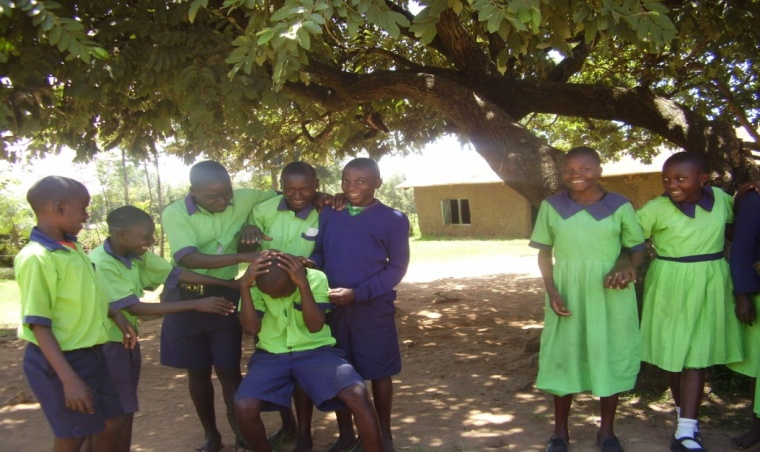Rise and Shine Special School
We are a special school caring for learners who are physically disabled. We are located in western part of Kenya, in the county of Kakamega, district of Mumias, in Shianda village. We have classes from nursery to standard 5. Learners are both boys and girls and all are boarders. Currently our school has a total enrollment of around 260 pupils, with 6 government teachers, 5 volunteer teachers and 10 school workers.
Our children mainly eat ugali and vegetables for supper, porridge for breakfast, and githeri (a mixture of maize and beans) for lunch. They get water from the borehole. They have a few classrooms, only two toilets only, one dormitory and a temporal kitchen. The school is fenced with a gate for security purposes.
Read all posts by Rise and Shine Special School here.
Eshakhulo Secondary School
Our school is recently established in the western part of Kenya. We are located in the county of Kakamega, the district of Mumias, in Eshakhulo village. It is a mixed day secondary school with 120 students in form one and two.
The school has 8 teachers and a few school workers. Students eat mainly githeri for lunch. Classrooms and toilets are few, we have a small library, but with no laboratory yet.
Khabakaya Primary School
We are located in western part of Kenya, in the county of Kakamega, district of Mumias, in Shianda village. Our school has nursery up to standard 8 with a population of 900 pupils. We have 20 government teachers. All of our buildings are permanent but old. The compound is small and not well fenced. All pupils are day scholars and they eat maize and beans (githeri) for lunch.
Read all posts by Khabakaya Primary School here.
Mung’ang’a Secondary School.
We are located in western part of Kenya, in the county of Kakamega, district of Mumias, in Mung’ang’a village. Our school is a mixed secondary school running from form one to form 4 with a population of 300 students, 10 teachers, and 6 subordinate staff. Our buildings are permanent (including the toilets) but the kitchen is semi-permanent. The compound has many trees and the students have one borehole for water. The students are day scholars.
At school they eat mixture of maize and beans (githeri) and sometimes ugali and sukuma wiki. Back at home they eat ugali and vegetables.
Read all posts by Mung’ang’a Secondary School here.
Planned Activities for the Project
All learners in the four schools will be imparted with knowledge and skills on preparation and serving food hygienically. This will help them to be independent and always maintain a balanced diet. The food commonly found in the catchment area include maize, beans, rice, vegetables, potatoes, cassava, and some fruits like avocodos, guavas, pawpaw, mangoes, bananas, passion fruits, and oranges.
Our students will learn how to combine the available food and fruits to balance their diet either at school or at home. This will eradicate malnutrition and reduce diseases related to nutrition and hence help them to learn well.




